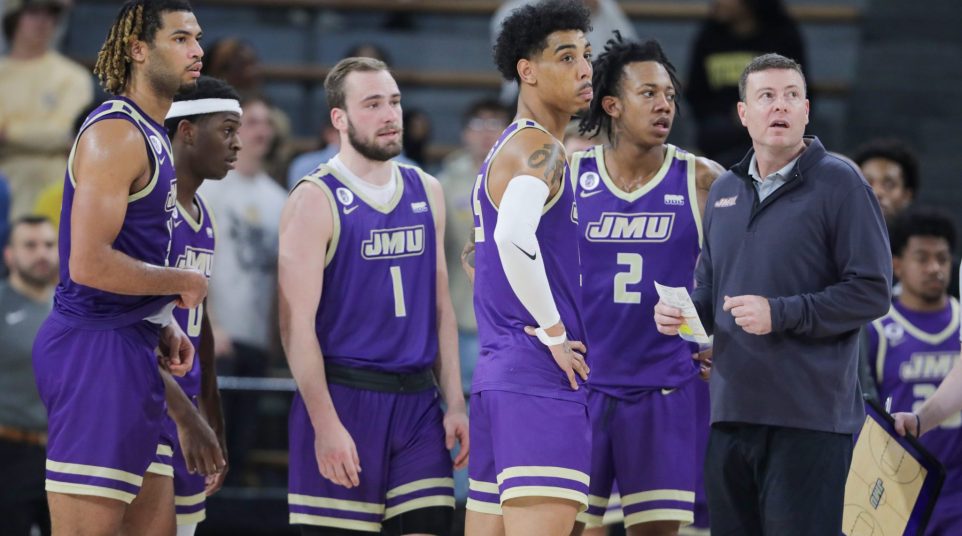
Friedlander: Projecting the 5 most likely upsets of NCAA Tournament
Everyone loves an underdog.
Well, not everybody.
Virginia fans still have painful memories about the night UMBC made their team an unwanted footnote to history. Even after the Cavaliers bounced back to win the national championship a year later.
And Purdue fans have recurring nightmares after watching their Boilermakers get knocked out of the past 3 NCAA Tournaments by double-digit seeds.
For most of us, though, early-round upsets are part of what makes the NCAA Tournament so great. They bust brackets, turn no-names like Ali Farokhmanesh into household names and provide a level of uncertainty and excitement that can’t be found in any other event in any other sport.
It isn’t a matter of if they’re going to happen. It’s when, where and to who.
So which teams will emerge as the Cinderella stories of this year’s tournament?
Here are a few of the most likely candidates (you can see my full bracket here):
10 seed Drake vs. 2 seed Iowa State
This matchup can only happen if the 2nd-seeded Cyclones and the 10th-seeded Bulldogs win their opening round games against South Dakota State and Washington State, respectively. Iowa State will be a heavy favorite if the neighboring rivals do advance to play one another, especially after the beating it put on top-seeded Houston in the Big 12 Tournament championship game.
That, however, doesn’t mean this will be a walkover for the Cyclones. Drake (28-6) comes in on a 5-game winning streak that includes a victory in the Missouri Valley Tournament final that prevented media darling Indiana State from getting an NCAA bid.
The Cyclones would be advised to shoot well if the teams do play. The Bulldogs are the nation’s best defensive rebounding team, limiting their opponents to 2nd chance opportunities only 22% of the time. And with an opportunity to knock off a power conference foe located just 35 miles away, they have plenty of incentive to pull off the upset.
12 seed McNeese State (+5.5) vs. 5 seed Gonzaga
One of the key elements in forecasting NCAA Tournament upsets is seeding. If one team is over-seeded or the other is under, it could go a long way toward producing what might seem like a surprising outcome. But it really isn’t.
That’s the case in this 12-5 matchup.
The Zags clearly got the benefit of their past tournament success in earning a seeding as many as 2 lines higher than most projected. The Cowboys, meanwhile, are a team that could easily have been slotted higher than 12 under after going 30-3 overall and 17-1 in the Southland Conference in their 1st season under former LSU coach Will Wade.
McNeese is an aggressive defensive team that forces an average of 16.5 turnovers per game, the 9th-best mark in the country. Conversely, the Cowboys are among the best in college basketball at protecting the ball. Their +6.7 turnover margin ranks 3rd behind only Houston and Iowa State.
On top of that, McNeese shoots a collective 38.8% from beyond the 3-point arc with 4 starters hitting at least 40% from distance. If Shahada Wells, Javohn Garcia, DJ Richards Jr. and Antavion Collum hit their shots, Gonzaga could be in for a long evening.

21+ and present in NC. Gambling problem? Call 877-718-5543 or visit morethanagame.nc.gov.
13 seed Charleston (+10.5) vs. 4 seed Alabama
The Crimson Tide are trending in the wrong direction, having lost 4 of their last 6 including a 14-point blowout at the hands of Florida in the opening round of the SEC Tournament. While they’re healthier than they’ve been since suffering through a series of injuries in early February, they need to start working on getting the defense healthy again.
Nate Oats’ team has given up 100 or more points in 3 of those 4 recent losses. And haven’t surrendered fewer than 81 in any of them, even the wins.
That could spell trouble against a 13th-seeded Charleston team that comes in averaging better than 80 points per game. The Cougars play fast, shoot a lot of 3s and come in hot, having won 12 straight on the way to the Colonial Athletic Association Tournament title.
Samford (+8.5) vs. Kansas
This is more about the Jayhawks and their injury-riddled lineup than Samford. Bill Self’s team limped into and quickly out of the Big 12 Tournament without their top 2 scorers – Hunter Dickinson and Kevin McCullar Jr. Its 20-point loss to Cincinnati was their 4th in 5 games.
Self said Sunday that he’s hopeful both will be ready to play by the time the Jayhawks and Bulldogs meet in Salt Lake City on Thursday. Even if they do play, it’s anybody’s guess how effective they’ll be.
Kansas’ lack of depth could be exaggerated even further by Sanford’s attacking style of play, nicknamed “Bucky Ball” after coach Bucky McMillan. The Southern Conference Tournament champion Bulldogs (29-5) go 10 deep, press all over the court and run an offense that ranks among the top 15 nationally in adjusted tempo, according to KenPom.

21+ only. NC only. Subject to eligibility requirements. Gambling problem? Call 1-800-GAMBLER or 877-718-5543 or visit morethanagame.nc.gov.
12 seed James Madison (+4.5) vs. 5 seed Wisconsin
It’s a well-documented fact that the 5-12 line produces more NCAA Tournament upsets than any other matchup in the bracket. But that’s not the reason the Dukes are by far the most popular pick to become the mid-major bracket buster.
At 31-3 with a victory against Michigan State on its resume, JMU enters the tournament with much the same vibe that Final Four participant Florida Atlantic did a year ago. And a valid argument can be made that it should have been seeded higher than 12.
What makes matters worse for Wisconsin is that the Dukes’ strength is the Badgers’ weakness. JMU is a high-volume offensive team that averages 84 points per game – ranking 10th nationally – and thrives on shooting from distance. Leading scorer Terrence Edwards Jr. and Boston College transfer TJ Bickerstaff are both prolific 3-point shooters, which could pose problems for a Wisconsin team that ranked dead last in the Big Ten in 3-point defense at 37.1% allowed.